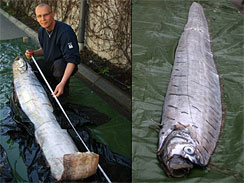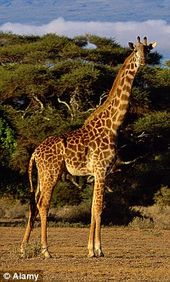
© AP Photo/Shizuo KambayashiDolphin sashimi, raw slices from the breast of a striped dolphin, is served during lunch at Moby Dick, a hotel run by the local government, in Taiji, southwestern Japan, Sunday, May 9, 2010.
Taiji - Residents of the dolphin-hunting village depicted in Oscar documentary
The Cove have dangerously high mercury levels, likely because of their fondness for dolphin and whale meat, a government lab said Sunday.
The levels of mercury detected in Taiji residents were above the national average, but follow-up tests have found no ill effects, according to the National Institute for Minamata Disease. The tests were done on hair samples from 1,137 volunteers of the town's roughly 3,500 residents.
"The results suggest there is a connection between hair mercury levels and eating cetaceans," Director Koji Okamoto told reporters at town hall.
Mercury accumulates up the food chain, so large predators such as dolphins, tuna and swordfish tend to have the highest levels. The latest studies published by the Japanese government show that meat from bottlenose dolphins had about 1,000 times the mercury content of that from sardines.
Fetuses and small children are particularly vulnerable to mercury, which affects the development of the nervous system. The Health Ministry recommends that pregnant women eat at most 2.8 ounces (80 grams) of bottlenose dolphin per two months.





Comment: "rising global temperatures" are the least of the grey whales problems: Freak Arctic Weather Precursor to the Coming Ice Age?